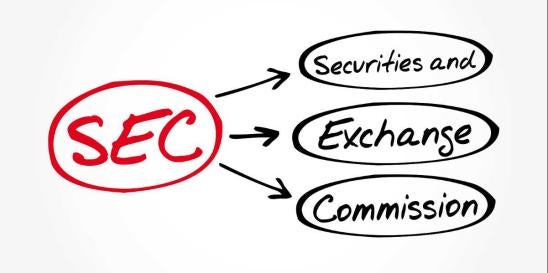The US Securities and Exchange Commission’s recently adopted rules governing climate-related disclosures, although significantly pared back from the rules proposed two years ago, represent a major change to the existing public-company disclosure regime. The rules require that public companies include the following, among other disclosures, in reports and registration statements filed with the SEC:
- for “large accelerated filers” and “accelerated filers” (other than those that qualify as a “smaller reporting company” or “emerging growth company”), disclosure of Scope 1 and Scope 2 greenhouse gas (GHG) emissions data,[1] to the extent material, with third-party attestation being required for such data beginning after the third fiscal year of disclosure;
- detailed disclosures regarding climate-related risks that have materially impacted or are reasonably likely to have a material impact on the company, including on its strategy, results of operations or financial condition, and the actual and potential material impacts of any such risks on the company’s strategy, business model and outlook;
- disclosures regarding the company’s activities, if any, to mitigate or adapt to a material climate-related risk, including a qualitative and quantitative description of material expenditures and material impacts on financial estimates and assumptions that directly result from the mitigation or adaption activities and the use, if any, of transition plans, scenario analyses or internal carbon prices;
- disclosure in the notes to audited financial statements of quantitative and qualitative information regarding capitalized costs, expenditures expensed, charges and losses incurred “as a result of” severe weather events and other natural conditions;
- disclosures regarding climate-related governance and, if applicable, risk management processes; and
- disclosures regarding any climate-related target or goal set by a company if the target or goal has materially affected or is reasonably likely to materially affect the company’s business, results of operations or financial condition.
For many companies, the rules will require enterprise-wide changes to how the company collects, assesses and reports climate-related data and other information, as well as changes to their governance structures and systems of controls. Changes may be driven both by the need to comply with the disclosure requirements and by a company’s view of how its disclosures will be received by investors or the public generally.
The new rules provide for phase-in periods for compliance, and as expected, the rules are already facing legal challenges that could delay implementation of the rules even if they ultimately are unsuccessful. One court has already entered an administrative stay of the rules’ effective date. However, because of the significant effort and degree of organizational change that compliance with the rules will require, companies should not wait to see the outcome of the legal challenges to begin assessing the impacts of the rules on their organizations or think that action can wait because of the phase-in periods. Indeed, the rules require large accelerated filers with a calendar fiscal year to include much of the newly required disclosure for 2025 in their annual reports to be filed in early 2026, meaning that they will need to have the systems in place to track and record the relevant information by the end of this year.
Assessing the potential impact of the proposed rules on a company and preparing the company for eventually complying with the rules will require participation from many different parts of the organization, but we expect that at many companies the task of setting the company on a course to do those things will fall on the general counsel and other in-house counsel with responsibility for relevant substantive areas. With that in mind, we have prepared the following guide for in-house counsel with respect to near-term actions their companies should be taking or should consider taking, depending on their circumstances. Bracewell will expand on a number of the topics noted below in future alerts, webinars or other similar communications.
- Engage senior management, the board of directors and relevant board committees and assess governance, oversight and management of climate-related risks.
In-house counsel likely will be hearing from their CEOs and board members, if they haven’t already, asking what the new disclosure rules mean for their company. In any case, in-house counsel should ensure that top-level management and board members understand the potential challenges and changes their companies may face with the new rules and encourage the level of board and senior management oversight and engagement that is appropriate for their situation. The new rules require companies to provide disclosures concerning their boards’ oversight of climate-related risks and management’s role in assessing and managing those risks. Although many companies already have robust board oversight of ESG matters and include related disclosures in their SEC filings, the new rules will require specific disclosure regarding these matters by all SEC-reporting companies.
In that regard, in-house counsel may be asked what changes, if any, should be made to board or committee composition and structure in light of the new disclosure requirements. Among other matters, consideration should be given to whether the creation of a new ESG committee — or a purely climate-focused committee — is appropriate or whether responsibility reasonably can be shouldered by an existing committee, such as the audit committee.
- Establish organizational responsibility for assessing the implications of the new rules for your company.
As noted above, this is a huge task that will require input from a multidisciplinary team, including legal, accounting, operations and possibly other personnel. Identifying the right team and setting clear responsibilities and timelines are critical near-term tasks.
- Understand the timeline for compliance with the rules as it relates to your organization.
As noted above, the new rules provide a phase-in for compliance over several years based on a company’s status as a large accelerated filer, an accelerated filer, a non-accelerated filer, a smaller reporting company or an emerging growth company. This fact sheet on the final rules published by the SEC provides a helpful table (on page 4) detailing the phase-in periods for each type of SEC registrant.
- Understand the disclosures the new rules will require for your company based on its specific circumstances, including with regard to differences between what the company is disclosing now and what will be required by the new rules.
The new rules are highly prescriptive in many respects (although less prescriptive and more flexible than the rules as originally proposed) and are intended to produce consistent and comparable disclosures across the public-company spectrum. With a few important exceptions (e.g., that non-accelerated filers, smaller reporting companies and emerging growth companies are not required to disclose GHG emissions data), all public companies will need to assess required disclosure under all provisions of the rules. That assessment, however, will need to be made in light of the company’s specific circumstances, and there will be categories of required disclosures that are very relevant to some industries or companies but of no or limited relevance to other industries or companies. Additionally, many companies have been voluntarily disclosing information that is similar to some of the information required to be provided under the new rules, but there may be gaps between or differences in required disclosures and a company’s current practices.
As companies begin to digest the new rules, it will make sense for them to drill down on the specific types of disclosures they will need to make. Questions that companies might ask themselves include the following:
- Are our Scope 1 emissions or Scope 2 emissions “material” such that we will need to disclose them?
- The new rules do not specifically define “material” for this purpose, but the SEC made clear in the adopting release for the new rules that it intends for materiality determinations to be made in accordance with the generally applicable standard under federal securities laws — i.e., that information is material if a reasonable investor would consider the information important when making an investment or voting decision or would view the information (or its omission) as having significantly altered the total mix of information made available. There may not be an obvious answer to whether an objectively reasonable investor would consider a particular company’s GHG emissions data important in making an investment or voting decision, but there obviously would be significant pressure on a decision not to provide emissions disclosure on the basis that it is not material.
- What climate-related risks do we face, and have they materially affected, or are they reasonably likely to materially affect, our strategy, results of operations or financial condition?
- What, if anything, have we done to mitigate or adapt to our material climate-related risks?
- Have we set any climate-related goal or target, and, if so, has it materially affected, or is it reasonably likely to materially affect, our business, results of operations or financial condition?
- What information that we are not currently disclosing will the new rules require us to disclose?
- For information that we are currently disclosing, will the new rules require that information to be established, assembled or disclosed differently, or disclosed more expansively or granularly, from how we are doing it now? If so, how?
- Which required disclosures might be particularly challenging for our company, such that they might merit special or prioritized focus?
- Begin to evaluate existing systems and resources related to climate-related information and identify changes that will need to be made.
Companies, particularly large accelerated filers, in some industries, such as energy or manufacturing, likely already have systems in place to collect much of the data called for by the new rules, and many public companies have been publishing voluntary disclosures in the form of ESG reports for years. However, smaller companies in such industries may not currently have the resources necessary to devote to compliance with the new rules. Likewise, companies in non-GHG intensive industries, such as financial services, previously may not have had the need, or had a more limited need, for such systems. And even those companies that are experienced in collecting and disclosing climate-related data and other information likely will need to expand their systems to cover a much broader universe of information and ensure that controls and procedures meet standards for disclosures in SEC-filed documents and are appropriate for enhanced scrutiny and potential liability that will come with including such disclosures in SEC-filed documents.
Companies may need to invest significantly in new personnel with appropriate expertise and in new technology, and they will need to expand their disclosure controls and procedures (including design, implementation and testing of such controls and procedures) to cover new sets of information that are wide-ranging, potentially voluminous and, in many cases, highly detailed. Accordingly, public companies should begin to assess their existing capabilities and identify the changes they will need to make to comply with new rules to ensure that the changes can be effected in accordance with the compliance timeline.
Additionally, the climate-related risk disclosures required by the new rules may require that companies devote significant resources to expanding the process by which they identify and assess climate-related risk. The new rules place a heightened emphasis on materiality (e.g., the requirement noted above to disclose GHG emissions if such emissions are “material”). To the extent not already in place, companies should begin building systems for making and documenting decisions around materiality in the specific context of climate-related information.
- Evaluate needs and strategy for retaining third parties to assist with disclosures, including for attestation of GHG emissions data.
As noted above, for companies that are required to disclose Scope 1 or Scope 2 emissions data, the new rules eventually will require attestation regarding such emissions data by an independent third party meeting certain minimum qualifications, which may be a public accounting firm if it meets the minimum qualifications but need not be an accounting firm. The market for providing these attestation services is evolving and will continue to evolve as accounting firms and others develop their ability to provide these services. Some observers have raised concerns that the supply of emission-attestation services may not initially meet the demand for such services that the proposed rules would create. While the attestation requirement does not apply until after the third year a company is required to disclose emissions data, companies, especially large accelerated filers, may wish to begin thinking about their options for third parties to handle the attestation, as they may be helpful in establishing the controls and procedures for collecting the data to ensure that the disclosure information being developed and gathered will be sufficient for attestors to provide the required assurance.
In addition to attestation services, companies should consider their potential need for and access to other third-party advisors with the necessary expertise and experience, including attorneys, accountants/auditors and firms providing consulting and other services to assist companies with climate-related disclosures.
- Consider whether the disclosures required by the new rules warrant any changes to your current, planned or contemplated climate-related activities, such as setting or disclosing of climate-related goals or targets.
As noted above, the new rules require detailed disclosures regarding several matters that may or may not be relevant to a particular company depending on things that the company may or may not have done in advance of the initial compliance date for the new rules. These include whether a company has:
- adopted a climate transition plan,
- set climate-related goals or targets,
- used carbon offsets or renewable energy credits in setting its goals or targets,
- used scenario analyses or other analytical tools in assessing climate-related risk, or
- used an internal carbon price.
Companies may wish to reassess their existing, planned or contemplated activities in these areas in view of the new disclosure requirements. It may be the case that a company would want to modify its activities in one or more of these areas when viewed through the lens of what the company’s disclosures regarding such activities will look like under the new rules.
- Don’t forget that climate-related disclosures may be required under existing SEC rules and interpretations.
With the work needed to prepare for compliance with a massive new disclosure regime for climate-related matters, it might be easy to overlook the fact that existing SEC rules and interpretations may require climate-related disclosures in SEC filings, and the SEC staff may issue comments on climate-related disclosures, or the absence thereof, in a company’s SEC filings, as they did for a number companies in the fall of 2021 with respect to the companies’ 2020 annual reports on Form 10-K. Pending a company’s initial compliance date for the new rules, in-house counsel should continue to assess their company’s disclosures in view of the SEC’s 2010 guidance on climate-related disclosures.[2]
[1] Scope 1 emissions are direct GHG emissions from operations that are owned or controlled by a company. Scope 2 emissions are indirect GHG emissions from the generation of purchased or acquired energy that is consumed by a company’s operations.
In a departure from the rules as originally proposed, the final rules do not require disclosure of Scope 3 emissions (i.e., the indirect GHG emissions that occur in the upstream and downstream activities of a company’s value chain and that are not otherwise included in the company’s Scope 2 emissions) by any category of reporting company. It is worth noting, however, that California’s recently adopted Climate Corporate Data Accountability Act (Senate Bill 253) and the European Union’s Corporate Sustainability Reporting Directive will require certain public and private US companies that do business in California or the EU to disclose all three categories of GHG emissions.
[2] As a separate but related point, the adopting release for the new rules indicated, in a footnote, that the 2010 guidance will continue to be relevant for a company after it is required to comply with the new rules. It may be that the new rules effectively cover all of the potential disclosure topics highlighted in the 2010 guidance, but companies will need to make that assessment based on their particular facts and circumstances.





 i
i


